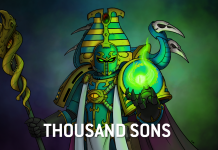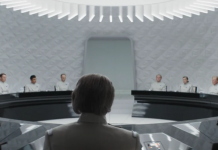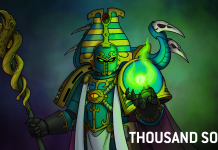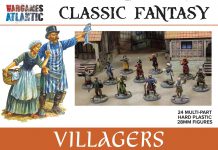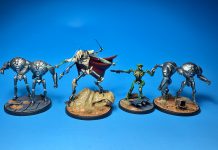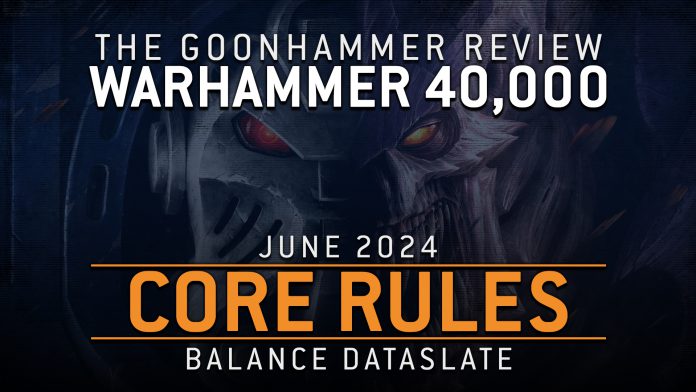Today Games Workshop dropped the largest single update we’ve ever seen to Warhammer 40,000 outside of an edition change. Through a number of FAQs and Errata, points changes, a new Dataslate, and a massive update to the Core Rules, they’ve overhauled the entire game, bringing us to what we at Goonhammer are calling “10.5 Edition.” There is a ton here to talk about and even more to take in, and we’ve split the content across a number of articles to make it easier to find what you’re looking for.
In this article we’re going to talk about the changes to the core rules – How has the basic game changed, and what those changes mean for your games. For more army-specific content, check out our other articles.
If this isn’t what you’re looking for, Check out the links below for our review of other parts of today’s big update:
Before we dive in we’d like to thank Games Workshop for providing us with a preview copy of these changes for review purposes.
Headline Thoughts
![]() Curie: They actually did it – the mad folx at the studio actually addressed a wild number of commonly asked questions and a bunch of weird edge cases, in the biggest FAQ and Errata dump I’ve seen in years! I’m actually really happy with the level of detail they’ve gone into on some of these answers. While there are still some edge cases to be addressed, the game is going to be in an amazing state with all of this coming through for players of all experience and skill level.
Curie: They actually did it – the mad folx at the studio actually addressed a wild number of commonly asked questions and a bunch of weird edge cases, in the biggest FAQ and Errata dump I’ve seen in years! I’m actually really happy with the level of detail they’ve gone into on some of these answers. While there are still some edge cases to be addressed, the game is going to be in an amazing state with all of this coming through for players of all experience and skill level.
![]() Wings: This is a fantastic step change in terms of how thorough FAQ coverage is – and the 10th Edition baseline it’s building on top of was already probably the best it’s ever been, and this should really help with standardising how people play the game.
Wings: This is a fantastic step change in terms of how thorough FAQ coverage is – and the 10th Edition baseline it’s building on top of was already probably the best it’s ever been, and this should really help with standardising how people play the game.
![]()
TheChirurgeon: The boys in the Ruleshammer pit are screaming, crying, and throwing up. What will they do with their lives now? Nah, I’m sure there will be more things we can address.
Curie: Always are.
Merged Rules Commentary
Something that’s worth being aware of when reading through the changes – quite a few things that used to be part of the Rules Commentary are now presented as Errata to the Core Rules, which is probably for the best because a lot of them did make functional changes to how the rules worked. Just be aware that not everything in the errata document that’s in red for new is actually a change to how the game works if you were already using the Commentary (though plenty of things are new).
As far as we can see, the following are merged from Commentary to the main errata with unchanged effect (though in some cases there are also later FAQ clarifications related to them):
- Out-of-Phase Rules
- Persisting Effects
- Battle-shock not doubling up if you’re both under Half-strength and a rule forces to take a test because you’re below Starting Strength
- Limits on Modifying Characteristics (e.g. Move never being able to be modified below 1”).
- Using Deep Strike when arriving from Strategic Reserves.
Core Rules and Balance Dataslate
Due to the volume of changes, we’ve decided to break them down based on the phase of the game they apply in. If they apply in multiple phases, then we’ve put them in the first section. At this point the line between the Balance Dataslate and Core Rules updates has blurred substantially (there are some Stratagem changes in the latter that definitely feel like balance changes) so we’re looking at all of these together, but have labelled the ones that specifically came from the Dataslate.
Up top, we’re going to start with a couple of far-reaching changes to how moving models works in all phases, then move onto other general changes, and finish with phase-specific ones.
Movement Changes
Moving Units
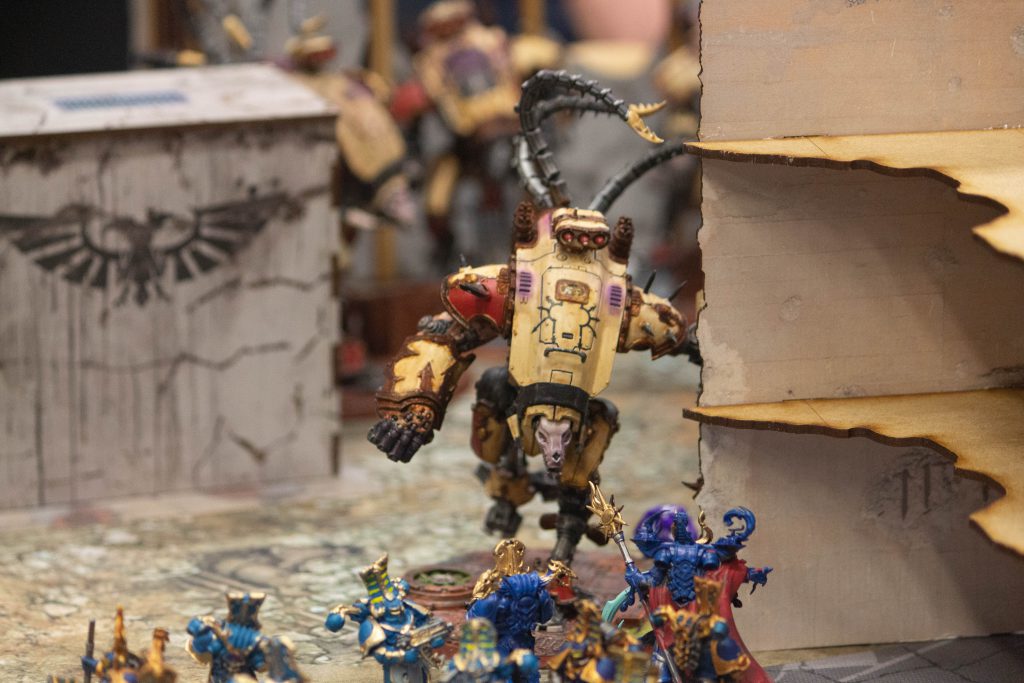
We start with biggest changes the game has seen in years – moving models now only requires that the base fit between the space it is moving through! No more arguments about this! Or at least new ones!
You cannot end a move with your model clipping terrain, so no proxy bases are needed here, but it does free up movement considerably for a lot of models with large overhanging bits like Daemon Primarchs or Greater Daemons. Similarly, to move a model you now move everything in straight lines using the same point on the model’s base (or hull) as the reference point.
The rules entry on this goes into quite a bit of detail and explains most of the edge cases you’d expect to come into play, combined with the pivot move (see below).
You cannot overhang the battlefield edge with your base (or hull if you are a vehicle) at any point, but you can overhang bits of your model over the battlefield edge. Note that you cannot use the parts of your model that overhang the battlefield edge to draw line of sight to your opponent’s models, but they can use those bits to draw line of sight to you!
Pivots
Along with the change to fitting units through gaps, how large models move around terrain and enemy models gets a big shakeup with the introduction of the concept of a Pivot Value – a set amount of movement to subtract if you need to do any pivoting, after which you’re free to pivot your model as much as you like in between sections of moving in a straight line. A pivot is defined as rotating the model around the centre of its base, or the centre of the model if it doesn’t have one.
This replaces the need to try and work out how far individual parts of a model or its base moved as you rotate it, which significantly simplifies the process of doing so, and should reduce what could be fairly thorny arguments at tournaments. There are, however, some issues that can be exploited with the first pass implementation here that we suspect are going to cause a bit of howling in the discourse, and may need some followup tweaks.
An important note here to reduce the amount of angry yelling that’s going to result – go read the addendum to this in the Pariah Nexus Tournament Companion before you get mad. There’s a significant change in there that massively cuts down how many issues this rule will cause. There still are some, but it’s now restricted to a very small number of units.
Right, so what are pivot values? Pretty simple – in the Rules Errata:
- Anything with a round base has a Pivot Value 0”, so can spin around as much as it likes
- VEHICLES and MONSTERS (excluding Aircraft) that are not on a round base have a Pivot Value of 2”
The key thing that the Pariah Companion does is change the second bullet point to apply to all models with a non-round base.

This matters, of course, because of Charges, especially out of Reserves. With a pivot value of 0” and a oval base, you could set up with the “long” edge of the base facing the opponent, then immediately pivot when you start charging to point the long end at the enemy, reducing what you needed to roll, reducing the target number by one for most Bikers, and two for particularly large Mounted models like Logan Grimnar. The amount of movement gained on the biggest oval base size is still under two full inches, so pivot 2” shuts this down. If you’ve tried to check this by subtracting the width from the length and are about to get mad at us in the comments, remember that you need to divide the result by two, because it’s distance from the centre of the base that matters for this calculation, not the whole width.
With that applied, the net effect for a lot of smaller models is that you probably lose a little bit of reach when you only need to make one pivot in a move, but as soon as you’re making more than one it becomes very helpful. For larger stuff, the massively increased ease of navigating through terrain (especially with the change to Move Units above) makes this a win even on the first pivot. Some round-based Monsters (mostly Magnus) also get a big boost in terms of positioning for Line of Sight.
All good so far, so where’s the problem? Round-based Vehicles. Even after the Pariah change there are still a small number of these that cause issues, mostly skimmers on small round bases. These measure to their hull, but there’s no pivot value associated with that characteristic, so these can gain a considerable amount of movement via Pivoting – in some cases more than 2” (e.g. Drukhari Raiders and Ghost Arks).
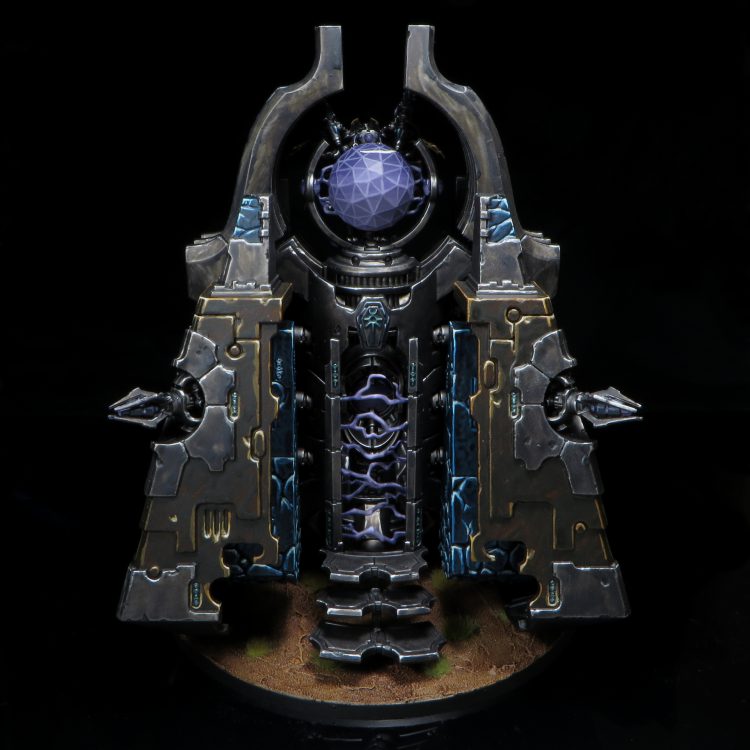
This is open to some movement jankiness in general but the two that will almost certainly result in a swift change (and maybe even some TO house rules ahead of any official action) are the Necron Monolith and the aforementioned Raiders. The corners of the Monolith protrude off the edge of the base, and (having measured) rotation gets you slightly over 1” of additional reach, so a 7” Charge out of Deep Strike. Multiple Monolith Hypercrypt builds are already seeing play, and this is a substantial and unwarranted boost to them. Meanwhile, Raiders can be packed with Wracks then double tap Tank Shock into Vicious Blades for an upsetting amount of mortals. Raiders also have the “fun” of being right on edge of whether they get more or less than 3” of movement when they rotate, to the point that which prow piece you choose when building them or how thick your glue is might matter, which we are sure will cause some extremely Normal reactions to any stream game where this gets used.
We’d expect (and encourage) a followup change to extend 2” pivots to anything that measures to hull, probably with a specific rider around Deep Strike charges for the small number of models that gain >2” of movement with a Pivot.
With that out the way (and assuming a fix for it is coming) – is this good? Yes, I think so; it’s much cleaner than what we had, and helps ensure that everyone is playing their models the same way. From a player experience point of view, encountering the concept of paying to rotate for the first time could also be a nasty surprise for players attending their first tournament, and we’re very in favour of changes that ensure budding participants in the competitive scene know exactly what to expect.
Curie: So close to greatness with this change when the Pariah Nexus Tournament Companion adjustment is taken into consideration. I overall love this change and give it a solid 8/10 for speeding up gameplay and generally reducing the weird measuring that sometimes happens with pivoting models.
General Changes
Redeploys (Balance Dataslate)
These now are all explicitly done before the first turn roll-off. Reflecting this, all abilities that specified the redeploy happened after the roll-off have been updated to say “after both players have deployed” and some have received point reductions as a result. This is a bit of a shame for some units where this was their USP – the Kroot Trail Shaper in particular feels like they got only the briefest of moments in the sun!
Modifying the Cost of Stratagems (Balance Dataslate)
Modifying the cost of stratagems has seen another (hopefully permanent) overhaul. Unless the name of the stratagem is specified in the ability, you can only reduce the cost of a stratagem by 1 CP each time you use any of these abilities, and any verbiage saying you can use them more than once doesn’t apply. This means no free usage of 2+CP stratagems, and also means no doubling up on stratagems with very few exceptions such as the Biologis Putrifier in Death Guard. Similarly, all abilities that increase the cost of stratagems such as the Callidus Assassin are changed to be the same as Cypher in the current Codex: Chaos Space Marines. That is, they increase the cost of all stratagems used within 12” of the model.
Big negative impact to the Callidus Assassin, and an interesting change to models like the Drukhari Archon and the Deathwatch Watch Master. Both of these models love being in the thick of the fight, and making Counter Offensive cost 3CP is a hell of a feeling.
Wings: The Swarmlord is hurt and wounded by you forgetting about him here. Which makes up for him no longer being hurt and wounded by Stratagem-buffed opponents.
Curie: I guess Swarmlord does exist, yes.
Stratagems That Add a New Unit to Your Army (Balance Dataslate)
All “respawn” Stratagems that replace a destroyed unit with a whole new one can now only be used once a game. This is bad news for the Detachments that have them, as they’re usually a major draw, and hits Unending Swarm Tyranids particularly hard, as they relied heavily on having endless Gargoyles, like an incredibly messed up version of Red Lobster.
Stratagems That Prevent a Unit from Being Targeted (Balance Dataslate)

Somewhat impactful change here – all stratagems that prevent a unit from being selected as the target of ranged attacks outside of 12” have been changed to 18”. Note that this does not apply to Lone Operative as it applies to stratagems, not datasheet abilities. Amusing interaction with Vanguard Onslaught – their Unseen Lurkers stratagem now either makes you untargetable outside of 18” or 6” if you already have Lone Operative.
Devastating Wounds

These now do mortal wounds again, with the caveat that they don’t spill over like normal mortal wounds. Overall a good change, as this cleans up armies that were designed to have defence against Devastating Wounds, but were overlooked in balance dataslates (cough Custodes cough). Just in general, it’s worth going through your faction’s Datasheets and looking for mortal wound protection – some Auras like that of the Canoptek Spyder are suddenly a lot better!
Hazardous
Hazardous has been reworked – now it always causes 3 mortal wounds (that also don’t spill) whenever a hazardous test is failed. The controlling player must allocate the mortal wounds first to any model with a hazardous weapon that has lost wounds, as well as starting with any non-character models. Much cleaner, and also gives some protection for multi-Wound models that can access a Feel No Pain like Hellblasters led by Azrael or Kataphron Destroyers led by a Tech-Priest Dominus.
Mortal Wounds
Mortal wounds have been tidied up a little – the biggest change here is explicitly formalising that mortal wounds must be allocated in the same way as normal attacks – that is you must start on non-character models in attached units. Nicely cleaned up, and fixed players trying to game the system by taking small numbers of mortal wounds on their attached characters rather than the bodyguard unit models.
Re-Rolls and Fast Rolling
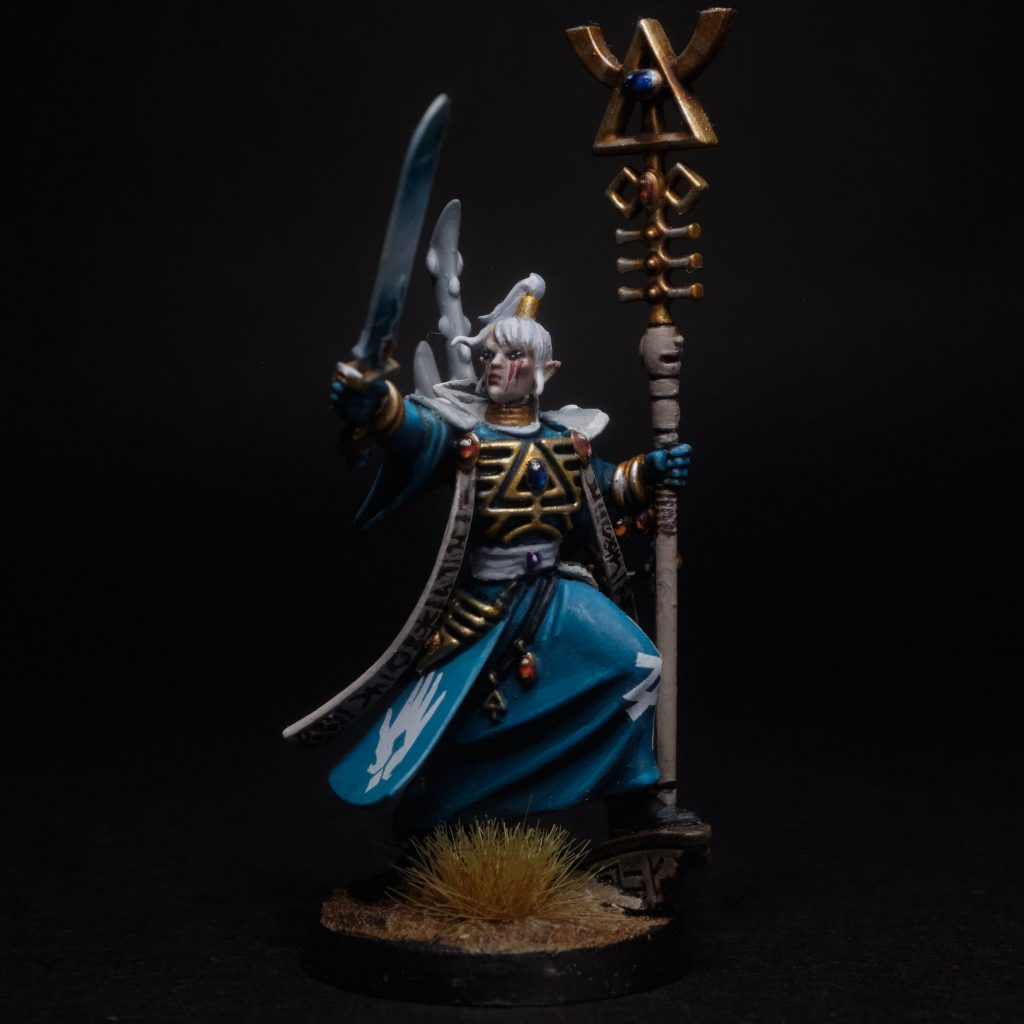
Command Re-Roll sees one big change – it now explicitly states that you can use the stratagem when fast rolling to re-roll a single result. Eat your heart out WTC players! This is also applied to effects that let you re-roll a single hit and/or would roll such as the Aeldari Unparallelled Foresight ability, and Aeldari are, in fact, one of the biggest winners here thanks to both this and most of their Characters having a 4+ Invulnerable Save – because you can also now explicitly use a Strands of Fate dice on a re-roll, if you batch roll your Invulnerable Saves and die exactly, whoops no you didn’t.
Timing
They’ve merged After, Just After, and Immediately timings together – no more quibbling about the exact wording on a reactive ability or stratagem. Now the active player chooses the sequencing on this.
Re-rolls
… are now explicitly the same as a roll. So you can use Fate Dice or Miracle Dice when you re-roll a result.
Repositioned Units
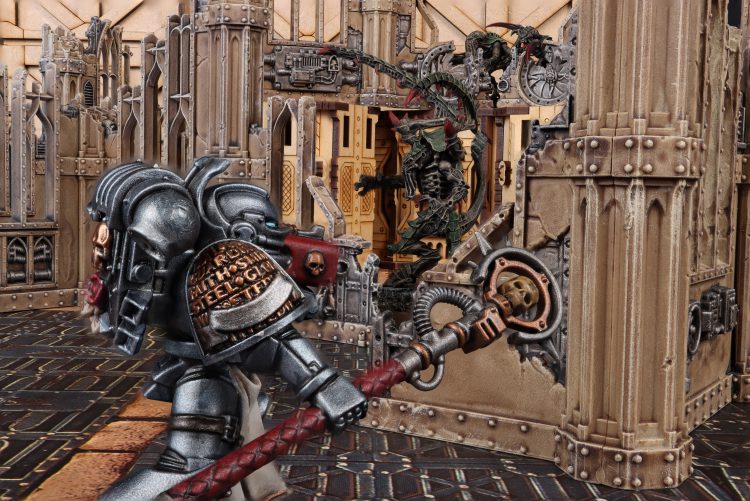
Credit: Pendulin
Small tweak here – they’ve clarified that embarking / disembarking from a transport does not trigger the Repositioned Units rule. People arguing that Omni-Scramblers stopped units from disembarking was rather silly.
Destroying Attached Units
Some detail is added on exactly how the process of resolving one part of an Attached unit being destroyed works. Specifically, (and in-line with how the UKTC at minimum was ruling this), if a Bodyguard or Leader is destroyed by an enemy units attacks, the unit is still an Attached unit until all the attacks are resolved, then any required split happens. In addition, if one part of a unit dies, it only has its own Keywords for the purposes of resolving any effects triggered by it being destroyed (so you can’t, for example, argue that wiping out a Bodyguard unit gives you Assassinate because they were a CHARACTER unit at the time they died).
Rules Having Two Conditions
There’s a new entry in the Rules Commentary: If you have an ability/stratagem/etc that has two conditions, such as the Lokhust Destroyers’ Hard-wired For Destruction, you must meet the first condition for the second condition to apply. This also comes with a reversal on the previous FAQ on their ability as well as Awakened Dynasty’s Protocol of the Conquering Tyrant stratagem. This addresses the most common Dread Mob question about Bigger Shell for Bigger Gitz which some players had argued gave you +1 damage all the time, regardless of whether the attack targeted a Monster or Vehicle unit.
Mustering Armies
A couple of common sense changes here -first, you have to include at least one Character in your army that can legally be your Warlord, so you can’t somehow wriggle out of having one. Second, if your Warlord changes which units are Battleline, this obviously does include for the purposes of how many of them you can include in your army, even though in theory picking the Warlord comes afterwards.
Command Phase
Gaining Command Points
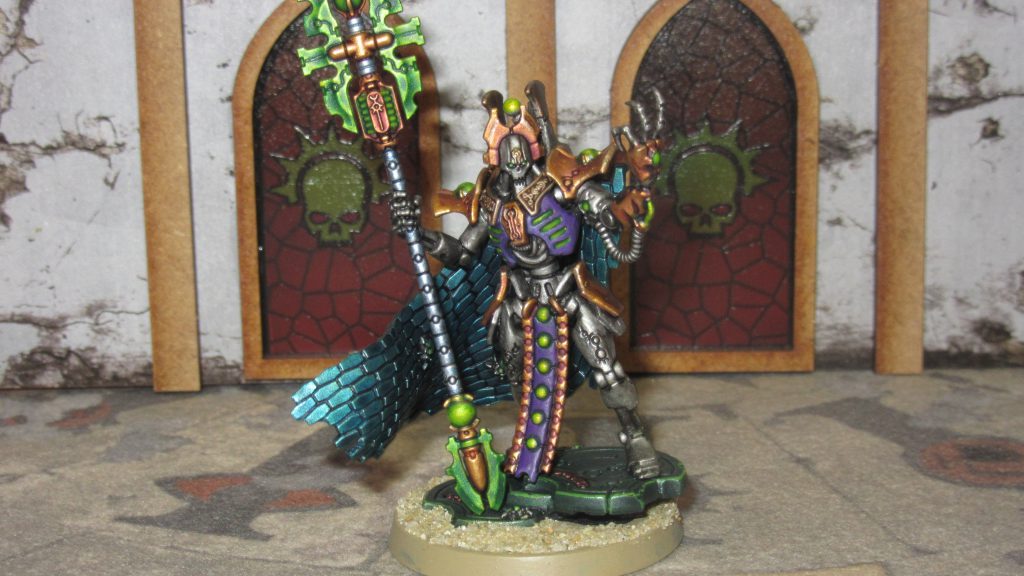
Command Point generation is now very clear: You can gain a maximum of 3CP per battle round – 1 per each player’s command phase and 1 additional one from other sources. Exemptions are still possible (Votann’s Ruthless Efficiency for example), but no more arguing that the Autarch Wayleaper or Lord Solar’s Command Phase CP was exempt from the 1 per battle round rule.
Movement Phase
Ruins (Movement)
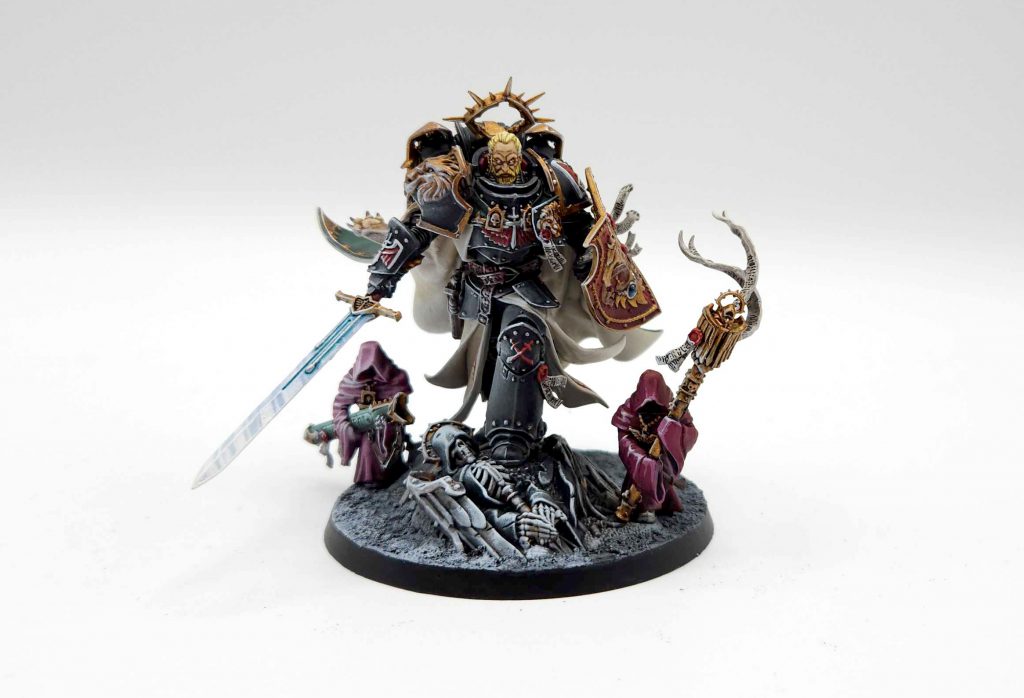
Belisarius Cawl and IMPERIUM PRIMARCH models can now go through Ruins. Cool; not what Cawl necessarily needed, but a nice change. The Lion and Guilliman finally being able to follow their troops through the wall is a nice touch as well.
Shooting Phase
Grenades
The Grenade stratagem has been restricted significantly- you now can no longer use it when you have Fallen Back or Advanced. Still doesn’t check for eligibility to shoot, but this doesn’t really matter as there aren’t really many units that have the grenades keyword and no ranged weapons.This is quite impactful for stuff that can Fall Back/Advance and Charge, as they often use Grenades in the midst of such a manoeuvre to soften a foe up.
Being Eligible to Shoot
There has been a small tweak to what it means to be eligible to shoot – if a unit has no valid targets for at least one of its ranged weapons, then it cannot be selected to shoot. It is still eligible to shoot for other rules purposes, but this fixes things like Abaddon taking a Dark Pact test with no actual activation and makes shoot’n scoot abilities like that of Tyranid Gargoyles actually require attacks to be resolved (as most sane TO’s ruled already). There’s also a commentary entry that means you can’t pick a unit to shoot, not shoot any weapons, and still count as having “shot” – you have to make at least one attack.
Indirect Fire
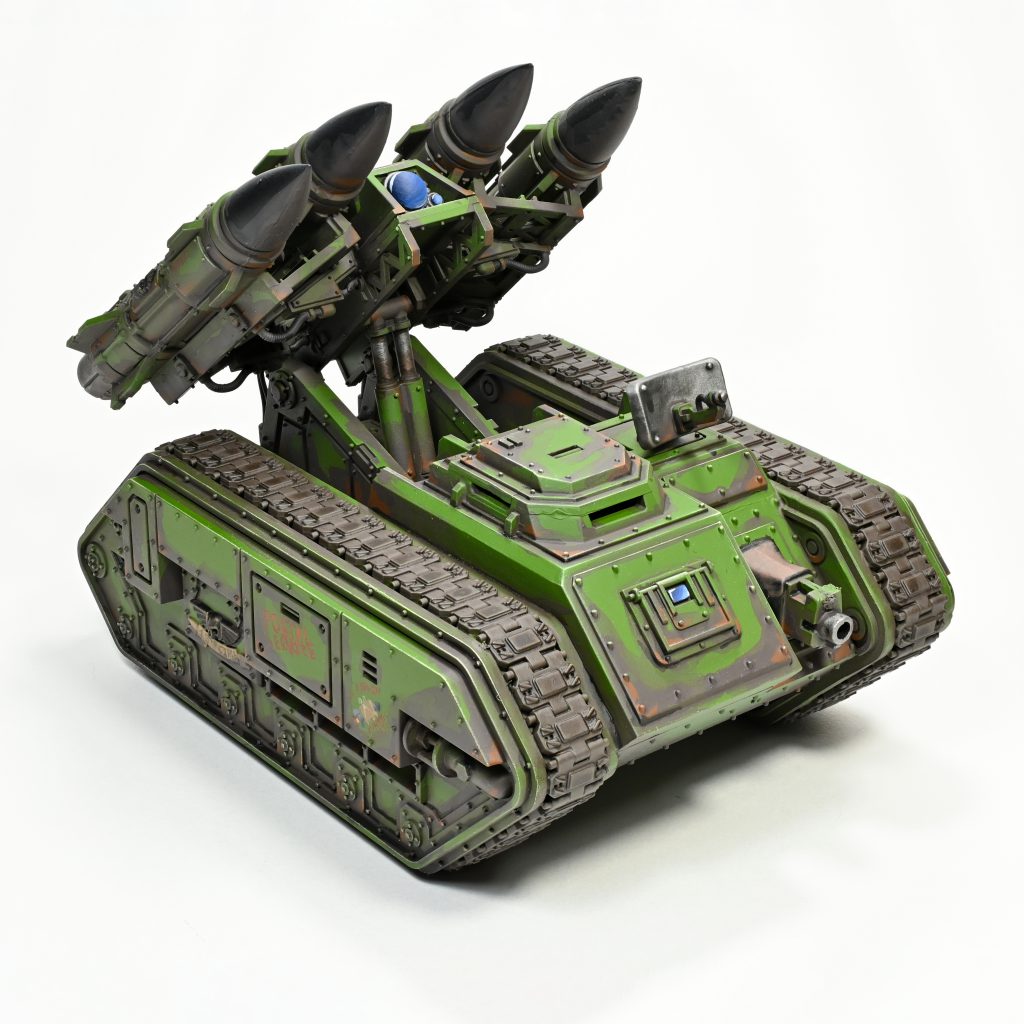
Indirect takes a massive hit: It still subtracts one from all hit rolls and your target gets the Benefit of Cover, but now it also caps how easily you can hit the foe – unmodified hit rolls of 1-3 automatically fail. You can still benefit from other rules, such as lethals or re-roll sources, but this drastically limits the effectiveness of Guard artillery mainly. Bizarrely (and kind of what we were referring to up top) this is not presented as a Balance Dataslate change, just a Core Rule update.
Firing Deck
Firing Deck sees a slight adjustment – you now cannot select models that have already shot this phase to use Firing Deck while embarked. No more shooting Eliminators then embarking with their move and then firing their weapons a second time with Firing Deck! The opposite is also true – once used for Firing Deck, models are no longer Eligible to Shoot, so if you conspire to blow up an Impulsor full of Hellblasters via failed Hazardous checks, you don’t get to shoot the squad again. You still cannot use One Shot weapons with Firing Deck as well.
Charge Phase
Tank Shock
There’s two fundamental changes to Tank Shock here: the first is that the stratagem is explicitly used after you finish a charge move, and the second is that it now uses the charging model’s Toughness rather than the strength of one of its melee weapons. There’s also no longer a bonus for being higher than the target unit’s toughness. Makes things like Land Raiders and Monoliths pretty funny for Tank Shock while being a pretty big nerf to Titanic Knight models (special mention to the Knight Lancer who goes from 22 dice to 12).
Heroic Intervention
…goes down to 1CP, a much needed change in a melee-heavy metagame. Having access to this more often helps add value to including a small number of counter-charge threats, and is also extremely good news for looming monstrosities like C’tan. Guilliman also loves this, as he can burst through a wall with it.
Fight Phase
Extra Attacks
Two changes here, one minor and one major. The minor change is that if a rule explicitly states that it increases the number of attacks for a specific weapon, it can override the inability to modify the number of attacks made with Extra Attacks weapons. The significantly bigger change is that you cannot select an Extra Attacks weapon as your base melee weapon when fighting, then also use the Extra Attacks weapon’s rule. This fixes a really weird interaction where the Krootox Rampager could get 4A at 6/1/2 Sustained Hits 1 and then an additional 4A at 6/1/2 Sustained Hits 1 when its base melee weapon is just 3A at 4/1/1 Lance.
Wings: I cannot believe this managed to sneak through for this long, glad that’s sorted!
FAQs and Commentary
This massive core rules errata, rules commentary update, and balance dataslate also included a massive pile of FAQ’s – too many to cover every single one here. It almost feels like the team at Games Workshop grabbed a copy of every single indie TO’s FAQ and answered every question inside of it. Some of these are very obvious, some of them are rather silly. What follows are the most important / impactful of these answers that we found when reading through them. If you’re interested in how a particular faction is impacted, go check out our other article focusing on the Q3 dataslate.
Big Guns Never Tire and Out of Phase Rules
It is clarified that yes, Big Guns Never Tire is a Shooting Phase rule, so you can’t use it to shoot out of combat in other phases. That means no Overwatching with a tied up unit, and no firing out of combat on death with a Tank Commander.
Multiple Activations in a Single Phase
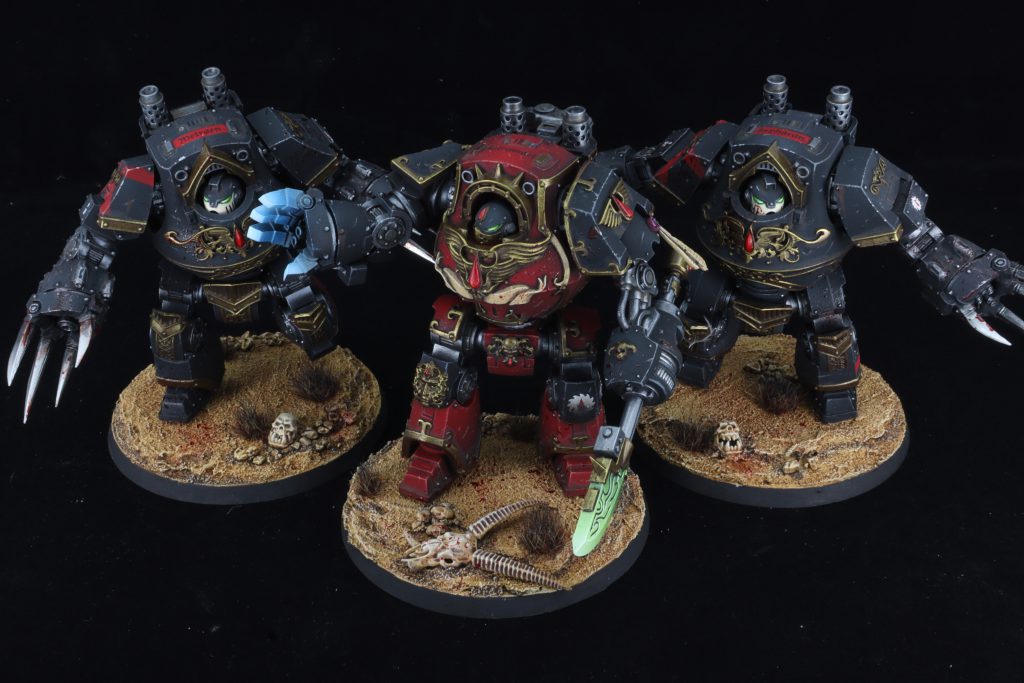
Addressing Murderfang and the Death Company Dreadnought, they’ve said that you can activate as many times as the relevant triggers apply. Note that you must still meet the requirements to do so – so you must be eligible to fight or shoot. If you are in engagement range, BGNT does not work outside of your shooting phase and as such will only trigger if you’re shot at in your shooting phase. Similarly, if you are not in engagement range with enemy models, you are not eligible to fight and so cannot activate (even if a Pile In would get you within engagement range).
Sequencing (Optional Abilities)
How do you determine who calls the Waaagh! first in the Orks mirror? Quite simply, you roll off and the loser then chooses whether they want to use the ability or not, at which time their opponent can respond. The same applies to any other time when you’re presented with the option to activate any kind of ability at the same time as your opponent. No more “If you do, then I will; otherwise I will do nothing” standoffs!
Consolidation
Has been clarified to be mandatory after having fought with a unit, but it is optional to move each model in the unit (making it effectively optional, but ensuring that anything that keys off of consolidating still happens).
Multi-model Character Units (That Are Not Attached)
This one’s a favourite of Sisters and Ultramarine players – can you allocate attacks/wounds to Celestine while she still has Geminae in her unit, but is not leading an attached unit? The answer is yes, and the same applies to Calgar and Victrix Guard.
Controlling Objective Markers at the Start of the Battle
It is clarified that because objective control only “flips” at the end of each Phase, no one can control an objective until the end of the first player’s Command Phase. The only thing I’m immediately aware of that this affected is Gretchin providing bonus CP, but that already got Errata-ed to happen in the Movement Phase, presumably for just this reason.
Multiple Effects That Set a Value
If a model is under the effect of two different abilities that both set a Characteristic to a value, then the player whose turn it is decides what order this happens in. The example given (and one of the main situations this will matter) is a Norn Emissary, which can be both Battle-shocked (setting its OC to 0) and under the effect of Singular Purpose (setting it to 15). This FAQ means that during its controller’s turn they can choose for it to be 15, while in their opponent’s turn it’s likely they’ll choose for it to be 0. Do note that this is very narrowly targeted to effects that set a specific value – other modifiers still apply afterwards as normal! An example is also given of this in the context of damage – if a melta weapon has its damage set to 0 while in melta range, the modifier will apply afterwards, so some damage will still get pushed through.
Special Rules and Firing Deck
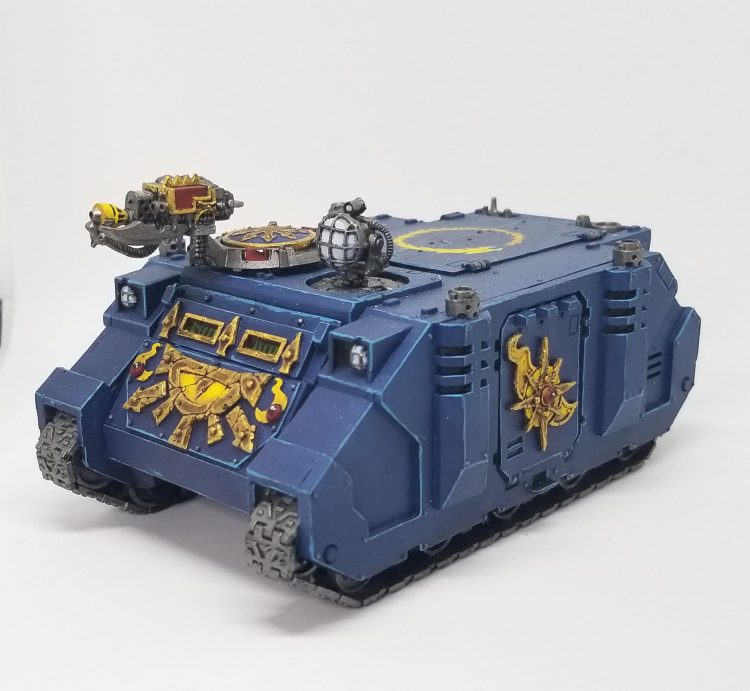
It is emphasised that only rules that explicitly state that they work while embarked do anything, and that includes rules that modify or grant abilities to weapons. This means that these won’t apply when used with Firing Deck, which is particularly important for the Arcane Vortex in Thousand Sons.
Engagement Range, Base Contact and Overhanging Models
A rule has been added to ensure that if enemy models overhang their base significantly, this cannot prevent you from successfully charging. When charging a model that overhangs their base, as long as it would be possible for you to reach Engagement Range with the distance you rolled if the enemy did not overhang their base, you move your model as close as possible then count as being in Engagement Range for the rest of the turn as long as any part of your model is within 1” of any part of their model. The same is true for establishing base-to-base contact during a pile-in or Consolidation. This reduces the jank potential of a very small number of oddly shaped models, and is a welcome addition! Do note that this is narrowly tailored to overhanging models like the Toxicrene – other ways of making it hard to reach Engagement Range (e.g. cunning positioning behind walls) still work.
Ruins and Overhanging Models
Added after publication.
An unmarked stealth update has snuck into the Rules Commentary on Ruins, which is slightly oddly worded in a way that has potential to cause confusion. This now states that if a non-Vehicle model overhangs its base, then only the base is relevant for the purposes of determining visibility to and from that model. We believe this is just emphasising that if you’re not a Vehicle, only your base counts for determining whether you’re within, wholly within or not within a ruin, and protruding claws and swords etc don’t suddenly make you visible if they’re over the base of the ruin. We do not think this is intended to stop you drawing line of sight around a ruin with (e.g.) Magnus’s wings – because at that point, the ruin isn’t relevant for determining whether the model is visible.
Wrap Up
It’s a half-new world! Along with a new mission and plenty of balance changes (which you can find our thoughts on in the rest of today’s articles) these updates shake the very foundations of 10th Edition as we knew it, and what comes next is going to feel fresh and (hopefully) better. We’re excited to hit our first events with these in play, and we hope you are too.
Have any questions or feedback? Have a change you really love or hate? Drop us a note in the comments below or email us at contact@goonhammer.com. And if you’d like to support the site, get access to our Patreon and other exclusive content, or just view the site ad free, support us on Patreon.



